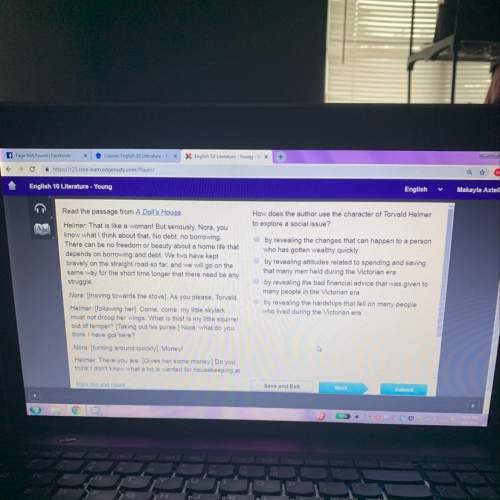
English, 23.06.2020 19:01, nhester3401
In subduing Tawhiri, Tū created peace in the heavens and the earth. Stopping to think, he considered the actions that had led to this war, and became angry at his brothers for fleeing into hiding when Tawhiri attacked. In his anger, Tū chopped down the forests to find Tāne and threw him into a basket. Next, Tū searched out Haumia and Rongo by digging into the soft earth, and put them in the basket as well. At last, Tū made nets to capture Tangora's fish, and lured Tangora into the basket. In a rage, Tū opened his mouth and ate his brothers to punish them for their cowardice. Tū's descendants became the Māori, the humans who are able to master anything that they decide to conquer: the forest, the sea, the food, and the earth. –"The Māori: Genealogies and Origins in New Zealand" Which details reveal courage as a Māori value? Check all that apply.

Answers: 2
Other questions on the subject: English

English, 21.06.2019 23:50, keaton3410
Which statement best describes how these paragraphs develop the central idea of the article? a- they elaborate on the idea that the offer has been made with youngsters in mind. b- they provide additional information as to why the prize is a wagon instead of something else. c- they support the idea that the wagon is attractive to youngsters and is a worthy prize. d- they introduce the idea that the newspaper is a generous organization. read paragraphs 4 and 5. the disc wheel coaster wagon is thirty-six inches long and sixteen inches wide. the coaster is built exactly like a high-powered automobile. the disc wheels have rubber tires and true roller bearings. it runs as smoothly as an eight-cylinder automobile. it is built of the strongest wood and is equipped with a reliable hand brake, enabling the owner to stop in an instant. the tongue—usually the first thing about a wagon to break and render the wagon unserviceable—is so stout that a man can jump on it without breaking it.
Answers: 1

English, 22.06.2019 01:00, smokey13
Pls excerpted from "hope is the thing with feathers" by emily dickinson [2] and sweetest—in the gale—is heard— and sore must be the storm— that could abash the little bird that kept so many warm— [3] i've heard it in the chillest land— and on the strangest sea— yet, never, in extremity, it asked a crumb—of me. in the last stanza, the author writes that the little bird “never … asked a crumb of me.” which type of figurative language is evident in these lines? a. onomatopoeia b. alliteration c. assonance d. personification
Answers: 2

English, 22.06.2019 03:20, MathChic68
If you begin to question the validity of the catholic church's teachings, then you could be considered a
Answers: 1

English, 22.06.2019 07:10, jakhunter354
In 2–3 complete sentences, thoroughly explain the protagonist's main motivation or goal in "daughter of inventions"? what does the protagonist want? provide at least two specific details from the text to support your analysis of the protagonist's motivation or goal.
Answers: 1
Do you know the correct answer?
In subduing Tawhiri, Tū created peace in the heavens and the earth. Stopping to think, he considered...
Questions in other subjects:

Mathematics, 29.07.2019 08:50



History, 29.07.2019 08:50


Mathematics, 29.07.2019 08:50




Mathematics, 29.07.2019 08:50








